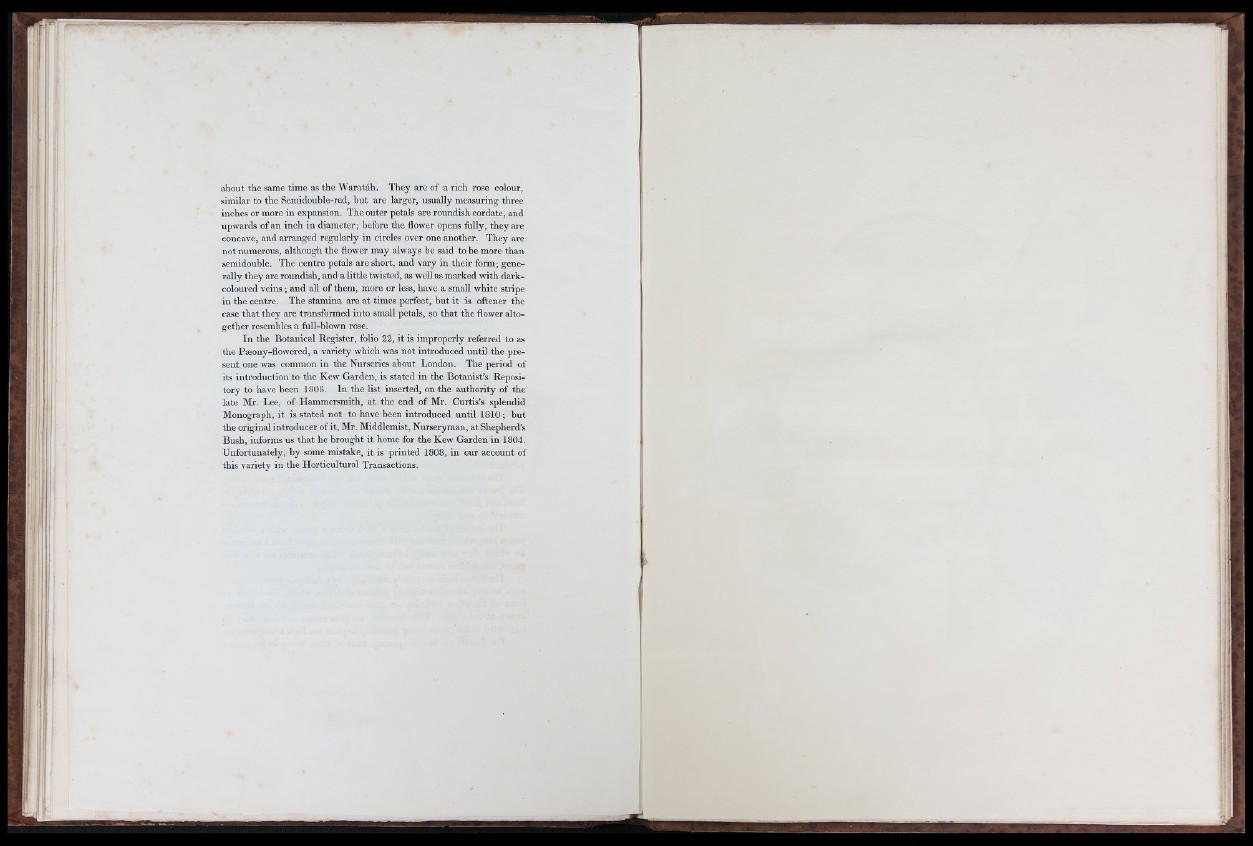
about the same time as th e Wa ra táh. They are of a rich rose colour,
similar to the Semidouble-red, b u t are larger, usually measuring three
inches or more in expansion. The outer petals are roundish cordate, and
upwards of an inch in d iameter; before th e flower opens fully, they are
concave, and arranged regularly in circles over one another. They are
n o t numerous, although the flower may always be said to be more than
semidouble. The centre petals are short, and vary in their form; generally
they are roundish, and a little twisted, as well as marked with dark-
coloured v e in s ; and all of them, more or less, have a small white stripe
in the centre. The stamina are a t times perfect, b u t i t is oftener the
case th a t they are transformed into small petals, so th a t the flower altogether
resembles a fiill-blown rose.
I n the Botanical Register, folio 22, it is improperly referred to as
the Peeony-flowered, a variety which was not introduced u ntil the present
one was common in th e Nuraeries about London. The period of
its introduction to th e Kew Garden, is stated in th e Botanist’s Repository
to have been 1808. In the list inserted, on th e authority of the
late Mr. Lee, of Hammersmith, a t the end o f Mr. Curtis’s splendid
Monograph, it is stated n o t to have been introduced u n til 1810; b u t
the original introducer of it, Mr. Middlemist, N urseryman, a t Shepherd’s
Bush, informs us th a t he brought it home for the Kew Garden in 1804.
Unfortunately, b y some mistake, it is printed 1808, in our account of
this variety in the Horticultural Transactions.